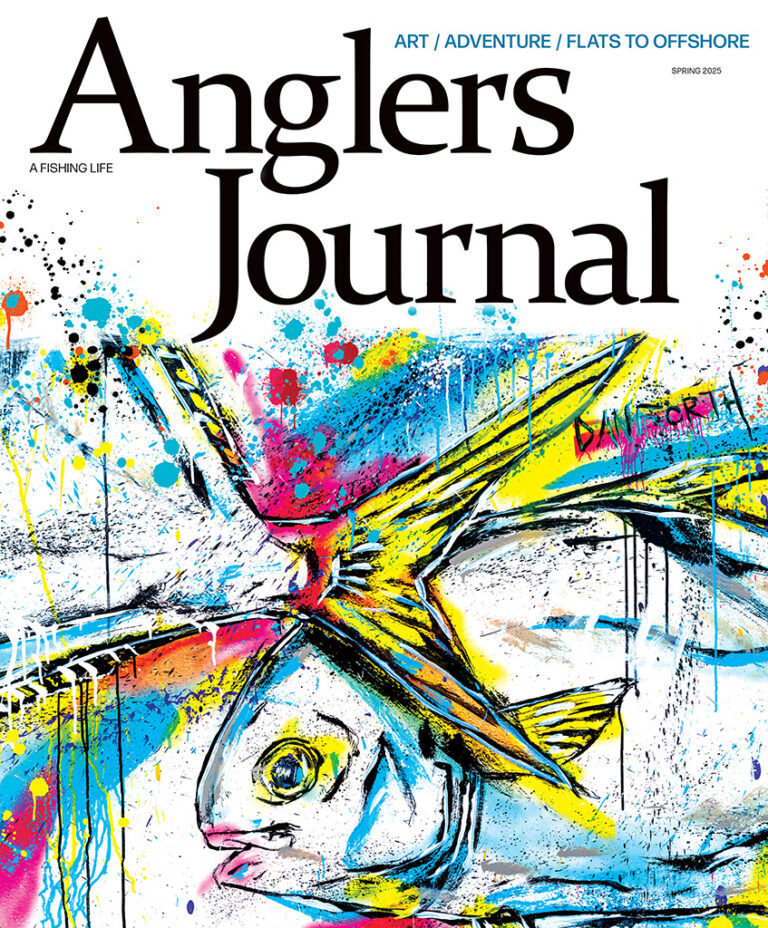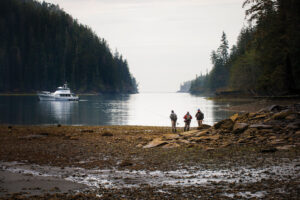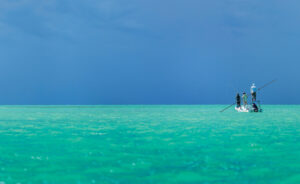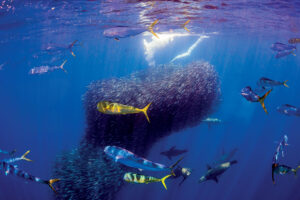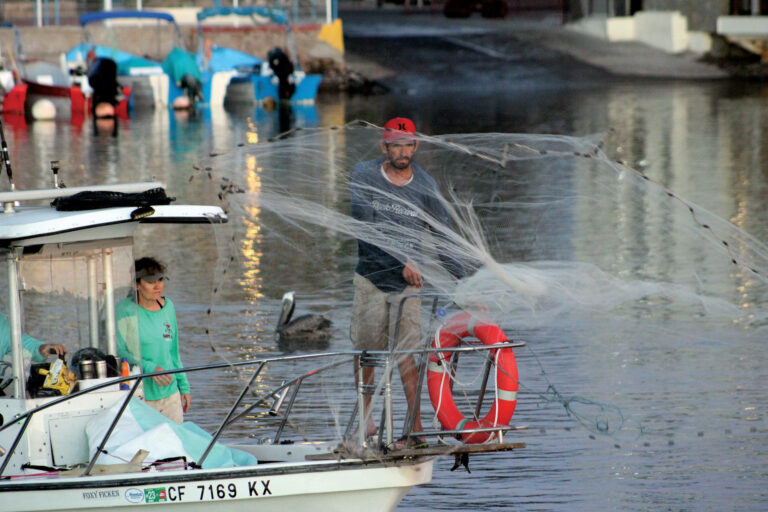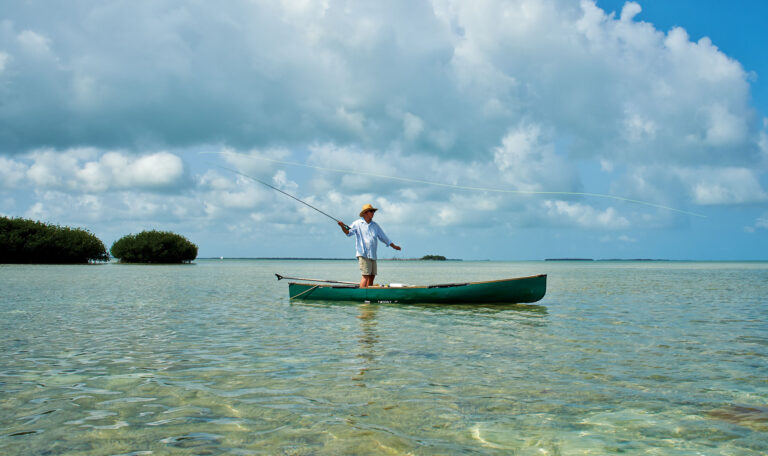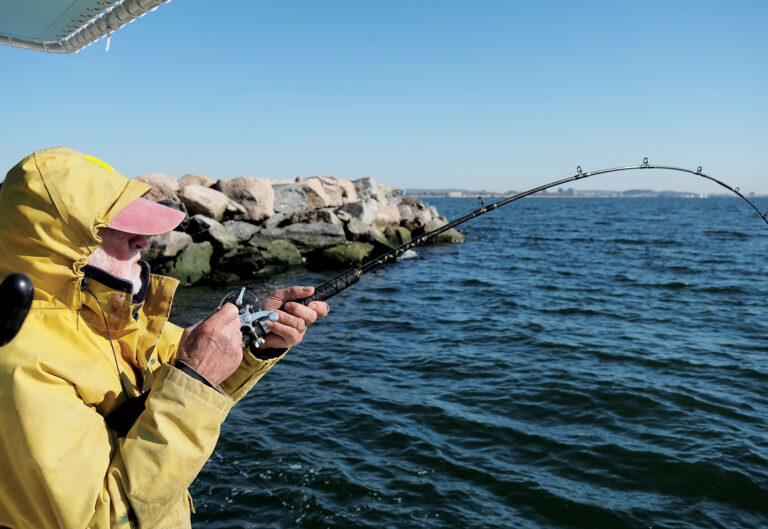There are more than 50 bent, mangled treble hooks in the old Skippy peanut butter jar, artifacts from the early to mid-1980s, when surf fishermen on Block Island, Rhode Island, were regularly tying into huge striped bass.
The hooks were collected over three years by seven sharpies who rented a house on the island for $150 a week. “We called it the ‘Jar of Broken Hearts,’ ” remembers Pat Abate, a top surf fisherman who came up with the idea of saving the straightened and twisted hooks. “We even had the name taped to the jar.” How many bent hooks were simply discarded on the beach? Plenty.
The biggest stripers back then often came late in the season, in November, attracted by sea herring, mackerel and shoals of large sand eels (American sand lance) up to 7 inches long. With big bass literally sucking in scads of sand eels, they often wound up with a plug’s hooks on the outside of their mouths, in the lower jaw and gill plates, rather than in their oversized maws. And that enabled the fish to bend the 4/0 trebles as if they were made of rubber instead of steel.
 Each battered hook represents a bite from a big striped bass.
Each battered hook represents a bite from a big striped bass. “It was all leverage,” says Abate, 70, the former owner of Rivers End Tackle in Old Saybrook, Connecticut. “It’s not that the fish were crushing the hooks. A lot of the hooks were outside the mouth, and that gave them a lot of leverage. When they were on sand eels, it was rare they’d swallow the plug.”
The plug of choice at the time was the needlefish — simple, utilitarian and deadly. Some of the best Northeast plug makers of the day burned the midnight oil to come up with new sturdier needlefish creations, including Danny Pichney, John Gibbs and Donny Musso.
 An early needlefish, circa 1980. They didn’t look like much out of the water — even less in the briny — but they could catch.
An early needlefish, circa 1980. They didn’t look like much out of the water — even less in the briny — but they could catch.“At the time, all we carried at night were three or four needlefish and a box of hooks,” says Abate. The hook of choice was the Mustad 3561E open eye treble, size 4/0. Abate says the seven of them probably went through nearly 200 hooks in a season.
It’s hard to believe some of the contortions were actually made by a fish. “You’d be questioned by people: Are you sure you didn’t do that with pliers?” says Abate. “Try doing that with a pair of pliers. You’d struggle. It was all leverage.”

And it’s not that the fishermen then really had the wherewithal to put a lot of pressure on big stripers, either. These were pre-braided-line days, and most of the guys were fishing 20-pound mono with 50- to 60-pound leaders. If the hooks didn’t bend, a fisherman sometimes “got rocked,” meaning the fish ran around a rock and chafed through the line.
Without exaggeration, the surf fishing for big stripers during those years on Block Island was probably as good as it’s ever been. Abate’s largest fish from that time weighed 55½ pounds. Tim Coleman, who was part of the crew (see Anglers Journal, Summer 2014), took a 67-pounder from the rocks. He also caught two fish over 50 pounds in one week. The other five each had multiple stripers over 50 pounds.
 How did a striped bass do that? Try twisting a 4/0 Mustad treble hook into this shape with a pair of pliers.
How did a striped bass do that? Try twisting a 4/0 Mustad treble hook into this shape with a pair of pliers.For the record, the contributors to the hook jar in addition to Abate and Coleman were Steve McKenna, Art Lavallee, Frank Bush, Frank Bentrewicz and George Schirmer. Coleman and Bentrewicz have died.

“If we’d made a cuss jar and put in a quarter every time we swore after straightening a hook out, we could have paid for the house,” says Abate, laughing. “We lost a lot of big fish, but there were a lot of big fish around. I don’t think we’ll ever see that abundance of big fish again.”
What remains are stories, memories and an old jar containing bent hooks and broken hearts, which mended themselves long ago.

